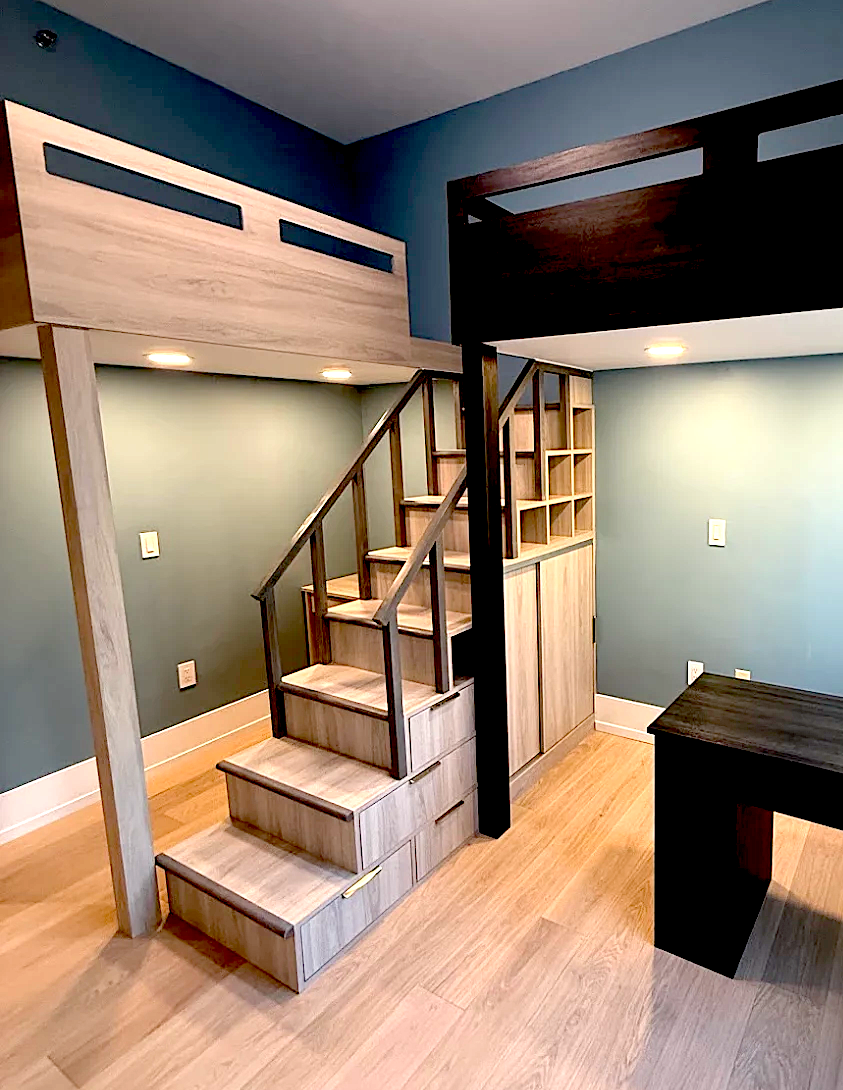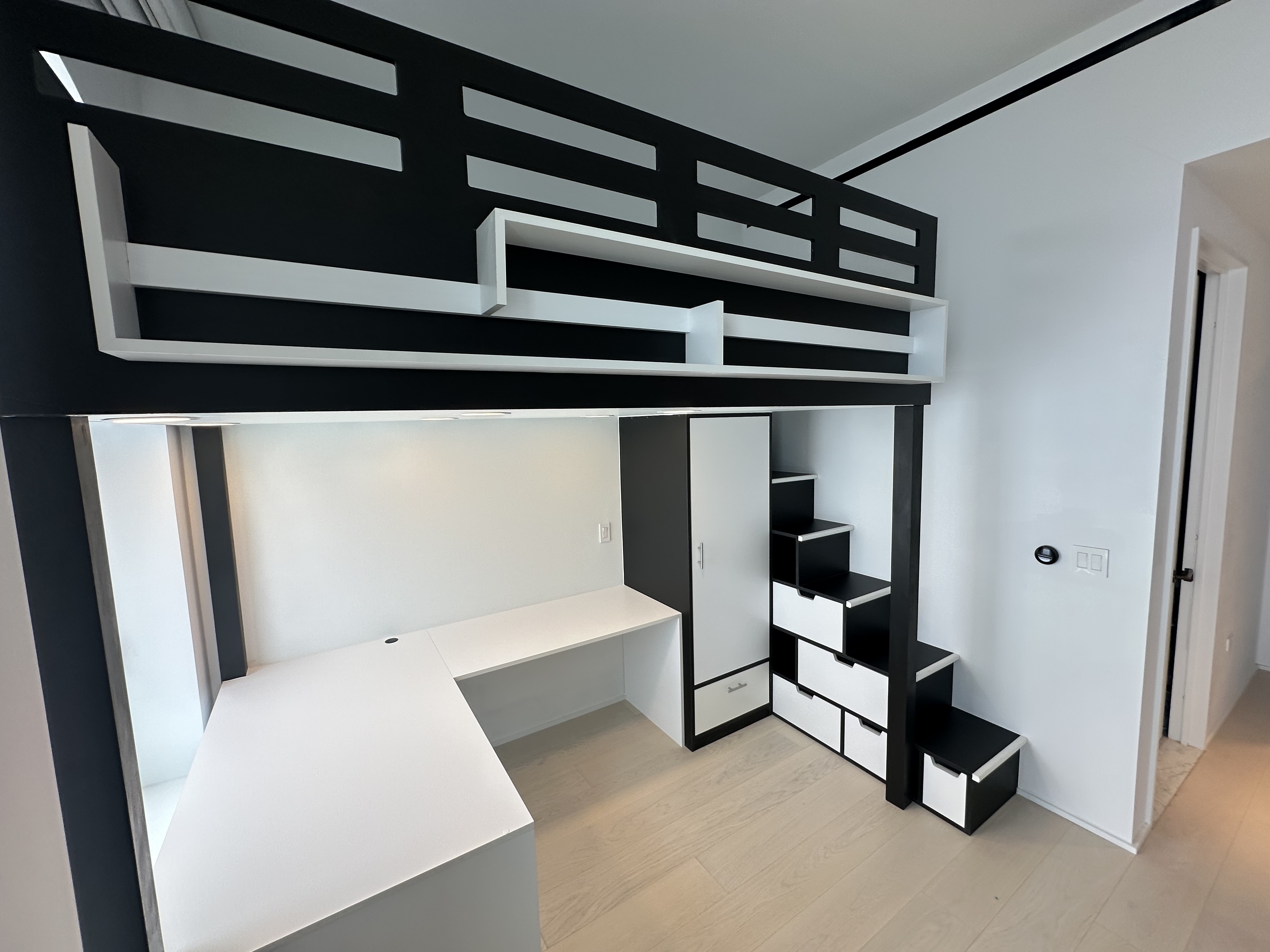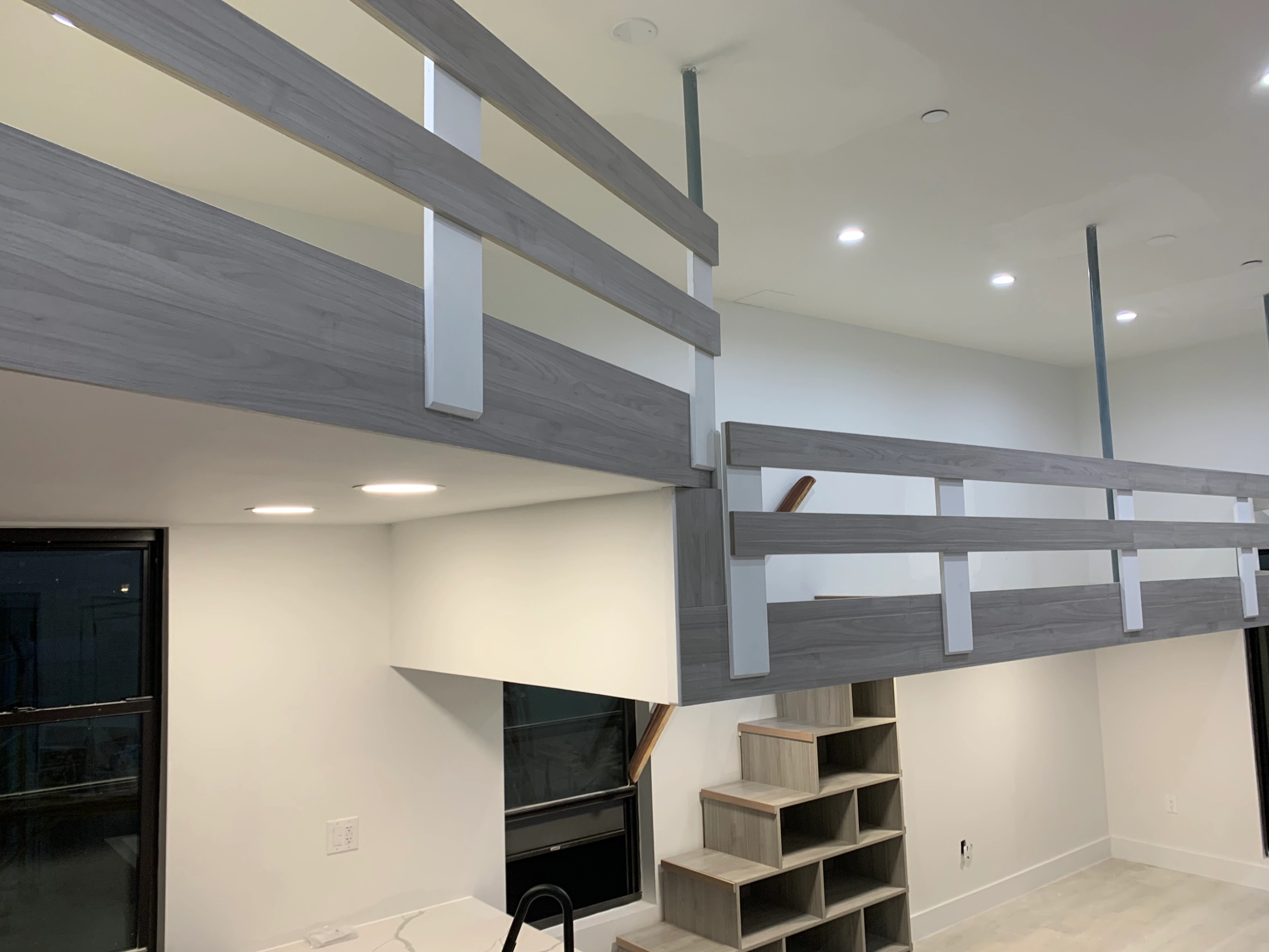Let’s Create Your Space
We’ll provide a tailored quote that reflects your space, style, and goals. Transparent pricing, thoughtful design, and craftsmanship built to last.




Information
+1 347-767-4805
107 27th St, Brooklyn, NY 11232, United States

Loft beds are safe if they are built and used properly. The real risks come from weak frames, low guardrails, bad ladders, low ceilings, and sloppy installation, not from the idea of a loft itself. Check the weight rating, make sure the guardrails sit well above the mattress, use a solid ladder or stairs, leave enough headroom, and fix the structure securely to the wall. For adults, teens, or heavier sleepers in tight spaces, a custom-built loft that is designed for your room and weight is almost always safer and more stable than a cheap flat-pack frame.
If you are thinking about sleeping higher up, it is normal to ask the basic question first: are loft beds actually safe?
You have probably seen stories about wobbly metal frames, cheap kids’ bunks, and late night creaks that do not exactly inspire confidence. On the other hand, you also see serious, built-in lofts that look like part of the building and feel as solid as a normal bed.
Both exist. The difference is in how the loft is designed, built, and installed.
In this guide, we will walk through the main safety points in plain English, so you know what to look for, what to avoid, and when a custom loft makes more sense than a flat pack frame.
A loft bed is not unsafe by default. A well designed, properly installed loft with the right mattress, guardrails, and ladder can be just as safe as a regular bed on the floor.
The problems start when:
So instead of asking “are loft beds safe?”, the better question is:
“How do I make sure the loft bed I am buying or building is safe for the person using it?”
The first thing that matters is simple: can the structure hold the load without bending, shaking, or working loose over time.
Key things to check:
If there is no stated limit, that is a red flag.
At LoftBedsNYC, the structural side is where we start. We build lofts as fixed installations, anchored into walls and designed for the person who is actually going to use them, not a generic “average” weight on a box.
The next safety point is obvious but often ignored: not rolling out of bed.
For a safe loft:
If you force a very thick mattress onto a frame that was not designed for it, you effectively lower the guardrail and make a fall more likely.
When we design custom lofts, we match the rail height and mattress depth on purpose, so the rail still does its job after the mattress is in place.
A lot of accidents around loft beds happen on the way up or down, not while someone is asleep.
Things to look for:
In many New York projects, we replace standard ladders with stair units that double as storage, so the climb is natural and stable, and every step does double duty.
Even a strong loft can feel unsafe if it is in the wrong place.
You should be able to sit on the bed without smashing your head on the ceiling. As a simple guide, you want a clear gap between the top of the mattress and the ceiling so you can move comfortably.
If the ceiling is low, we sometimes:
Check what is nearby:
A safe layout keeps people away from hard, sharp, or hot surfaces when they climb, sit up, or move during the night.
Loft beds are often sold as “fun” kids’ furniture, but the safety rules do not stop there.
We build many lofts specifically for adults in small New York apartments, so we treat them like serious furniture, not toys with a ladder.
Most of the big retail loft beds are flat pack. They can be fine if:
They are still a compromise. You get standard sizes and a frame that is designed to be shipped in a box, not built into your room.
A custom built loft, like the ones we create at LoftBedsNYC, gives you:
If you are asking serious questions about safety, it is usually because you care about more than a cheap quick fix. That is where a built-in solution pays off.
Before you buy or build, run through this list. If you hit a “no” on more than one or two points, look for a better option.
If you already have a loft bed, it is worth checking these points once in a while, especially the bolts and the condition of the base.
For us, safety is not an add-on at the end of the design. It is built in from the first sketch.
When we plan a loft, we:
The result is a loft bed that feels like part of the room, not a shaky unit dropped into it.
If you are still unsure whether a loft bed is safe for your situation, the answer is simple: it can be, if it is the right design, built the right way, in the right room. If you want help figuring that out for a New York space, that is exactly what we do every day.